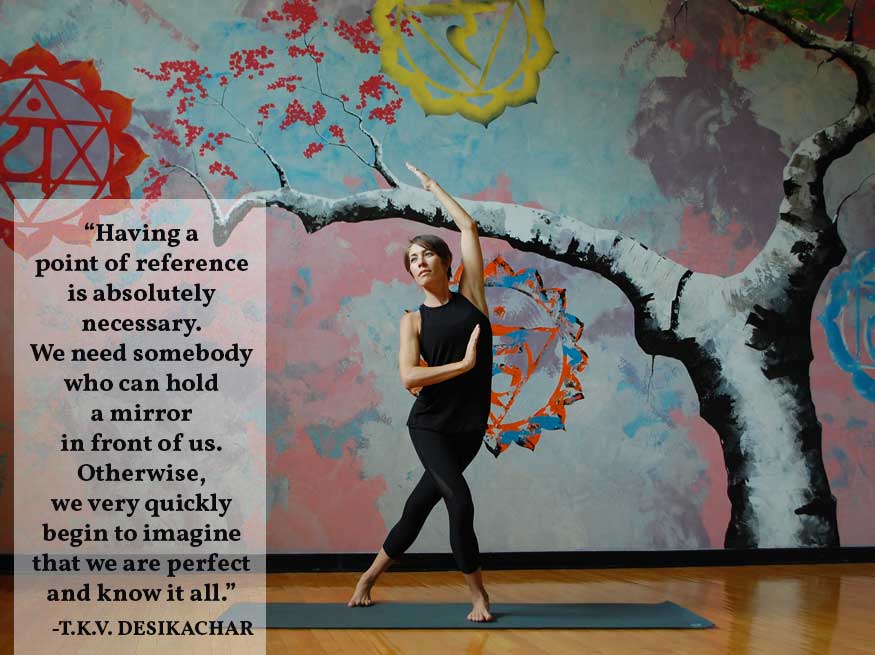 In the recent Pirates of The Caribbean movies, even the pirates had a Code of the Order of the Brethren which outlined appropriate conduct. I’ve actually sailed around the teal blue waters of the Caribbean sea and can hear the lapping of the waves, smell the salty air, and feel the warm sun on my skin (despite the fact that I’m bundled up in the mountains with hail pouring down outside as we speak). Nevertheless, those vivid memories flash into my senses as I watch Elizabeth Swan plead to be taken ashore by Captain Barbossa in the first movie of the series. Yes, it’s true, I just love thofilms.
In the recent Pirates of The Caribbean movies, even the pirates had a Code of the Order of the Brethren which outlined appropriate conduct. I’ve actually sailed around the teal blue waters of the Caribbean sea and can hear the lapping of the waves, smell the salty air, and feel the warm sun on my skin (despite the fact that I’m bundled up in the mountains with hail pouring down outside as we speak). Nevertheless, those vivid memories flash into my senses as I watch Elizabeth Swan plead to be taken ashore by Captain Barbossa in the first movie of the series. Yes, it’s true, I just love thofilms.
The point is that yoga professionals, in comparison to pirates, would seemingly have a stronger moral compass by which to live their lives and run their businesses. However, many times, a yoga code of ethics gets assumed. We’re going to clarify the need for one below, and show you how to easily implement one into your yoga studio.
WHY HAVE A CODE IN THE YOGA FIELD?
By the very nature of yoga, and it’s inherent eight-limbed path outlined by Patanjali, there is a moral code deeply embedded in the practice. The Yamas and Niyamas, which form the basis for those values, would seemingly transition without words into the profession of teaching yoga.
However, there is the common phrase, “making assumptions makes an ass out of you and me.” Not all yoga practitioners, or teachers, or studio owners, are on the same part of the yogic journey, and no two people would interpret those values in the same way.
Thus, if you are a studio owner who wants to maintain a high level of integrity for your business, create a code of ethics by which yoga teachers at your studio are expected to adhere.
This serves to benefit you in numerous ways. You:
- Build a sense of community by bringing the entire team on the same page.
- Invite clients and staff to live and practice an ethical-based path.
- Hold a clear vision for your business via guiding principles in action.
- Increase positivity at the studio. Not only can individuals improve the quality of the relationship they have with themselves and their growth, but they are encouraged to connect with others in a more meaningful and value-based manner.
SUGGESTED YOGA CODE OF ETHICS
Here at Swagtail, we operate by the following ten principles. These help guide our decisions and provide a foundation to take action with confidence. If any resonate with you, great! Add them to your own studio list. If not, refine as needed to create a yoga code of ethics that best represents you.
(1) SPEAK WITH INTEGRITY
Speak honestly. Use the power of your words to uplift yourself, co-workers, clients, and the company.
Examples: Speak positively about those on team and those who enter the studio. Even if you disagree with a studio decision, keep it to yourself and move on. If there are disagreements, know that going directly to the source of the issue can gain clarity and move from a focus on the problem to that of a resolution. If help is needed to sort out a disagreement, a conflict resolution policy can outline when and how to involve the studio manager or owner.
(2) KEEP YOUR PROMISES
Speak clearly about you’re going to do, and be willing to follow your words with consistent actions.
Examples: When you say you are going to start a new class time, or sub a class for another instructor, do it. Let your actions match those of your words. Life fluctuations happen, so if you do have to modify a promise mid-stream, use clear communication to notify those who will be affected as soon as possible.
(3) SHOW RESPECT FOR OTHERS
Each yoga instructor and staff member at the studio has a unique personality and skill set. Acknowledge their contribution to the team’s success with your body language, words, and actions.
Examples: Make eye contact with other teachers, staff, and students, when possible. Listen to what they have to say. Tell them they did a great job (if it’s true). You can also email or text them, too, when you notice a job well done.
Photo Credit: Pablo Heimplatz
(4) COMMUNICATE WITH CLARITY
Making assumptions can foster misunderstandings and drama. Be willing to ask questions of others when you are unclear about what they are asking. Find the courage to also speak up for what you need and want from them.
Examples: Ask another instructor for clarity about an upcoming workshop, or maybe even a part of their sequence used in their class. If you’re unsure about a studio policy, ask questions of the owner or manager to get on the same page. Need time off? Have a lot going on in your life that requires you to be away from the studio? Tell the owner of your needs and see how they can help be part of a solution. The goal is to make each situation a win-win for all.
(5) DEMONSTRATE LOYALTY TO THE TEAM
Consider how you might lighten the load of the studio, or make another instructor’s job easier. Whether your actions are noticed or not, this fosters a bond of trust, respect, and appreciation within the team.
Examples: Clean the studio well after your class. Put the props away in a tidy fashion, wipe down the floor, or even change out the roll of toilet paper that is low in the bathroom. Even wiping down the counters in the bathroom each visit helps (As a confession, I almost obsessively do this no matter where I am). Little actions speak volumes about your character, and they keep the business efficient for the long run.
(6) ASK FOR HELP WHEN NEEDED
Be willing to recognize your own limitations, and seek support from others. This could be simply deferring a question to the studio owner, or suggesting a student seek medical attention for an issue you are unable to address.
Examples: New to the studio’s computer system? Schedule time with someone to get trained appropriately. Have a student with a questionable injury? Ask your mentor or other instructors how they might modify poses to help meet the needs of that student.
(7) INFUSE YOUR WORK WITH EXCELLENCE
This means doing your best always. Complete each project with pride, integrity, and quality.
Examples: Each day will be different for everyone, so their best may vary. Be willing to go the extra mile and make sure your work is high quality. This might mean taking a bit of extra time to prepare for classes. You could also schedule in more time for your personal practice, or lend a listening ear to someone in need. Just know that doing your best is at the heart of any action taken.
(8) FOCUS ON SAFETY
Complete projects with short-term and long-term safety in mind for yourself and your students.
Examples: We all want our students to practice in a safe manner that does not increase pain or discomfort. Perhaps you take an anatomy training to deepen your understanding of what is going on in your clients’ bodies. Or, you could improve your skill set of yoga adjustments. You might even speak to a specialist in order to more deeply understand yoga progressions, the body, or the breath.
(9) HARNESS YOUR EMOTIONS
Elite athletes can set aside any negative emotions to get the job done. Be willing to set aside any personal issues and keep a professional attitude while on the clock.
Examples: Have a fight with your spouse before teaching? Be willing to let it go, and focus on the class at hand. Disagree with owner’s’ decision on an upcoming workshop outline? Don’t complain about it—keep your opinion to yourself and move on to do the very best you can with the decision that was made by someone else. You can always refer back to #1 of the code and find a way to resolve an issue, if needed.
(10) STRIVE FOR CONSTANT IMPROVEMENT
Use each opportunity as a learning experience to evolve personally and professionally.
Examples: Learn something new in the field of yoga (watch a video, attend a workshop, ask questions, learn from other teachers while at a workshop together). Even disagreements within the team can help you clarify how you might better want to communicate in the future with your colleagues and students alike.

Photo Credit: Gamze Bozkaya
HOW TO IMPLEMENT YOUR CODE
Now that you have some suggestions about how to create a yoga code of ethics for your studio (or even just yourself as a yoga teacher), here are the next steps to personalize it.
Customize your Code
Use the above suggestions, or those outlined by the Yoga Alliance or your own lineage of the practice, to come up with your own priorities. As the studio owner, come up with this first. You might even draw on the values by which your mission statement is formulated for your business, and where it is going. Just make sure to make it resonates with your voice and your direction. And, we suggest it be no longer than one page long. Keep it simple and powerful!
Invite Input from the Team
If you lead a team of teachers, then schedule a yoga staff meeting to go over the code of conduct with them. Instead of taking a dictatorial approach, request their input. Let the team help build and refine the code. Then, after the meeting, formulate the code for your studio.
Include the Code of Conduct in your Teacher Onboarding Process
Ideally, you have a system in place to notify new teachers at studio of policies and operations. If you do, having each new instructor read and sign the studio code of conduct can be done at that time. If you are just now introducing an ethical code to your team, have them read and sign a copy before their next class. We recommend that you keep a signed copy on file at the studio, and give the teacher or staff member the other copy.
Share the Code with Pride
Just like a wedding is designed to proclaim the marriage vows in front of family and friends, so, too, should you share your code of conduct with pride. Simple ways you can do this include:
- Hang it publicly at studio (maybe in a nice frame where all can see)
- Notify team of new guidelines (if this has not been done in an initial onboarding process already)
- Email clients your policy in an upcoming newsletter
- Post your ethical standards on your website. This transparency can help you stand out as a high-quality studio in your area.

Photo Credit: © Casey Brooke Photography
CODE VIOLATION?
In many versions of a perfect world, all people would agree on important topics and no conflict would arise. However, humans are very different and all growing and learning at different paces.
That being said, there are times a breach of conduct will occur. When you have a system in place to handle those violations, you will increase integrity and respect for you, your studio, and your brand. An established system will ensure all individuals associated with your business will be treated equally. Once everyone knows the rules of the game, they can decide whether to play by them or not. And, you, as a studio owner, get to decide who remains on the team.
The policy you put in place does not have to be lengthy. Here are some simple steps to do this:
- Outline when and how violations are to be reported
- Research the validity of the complaint
- Speak directly with the person in question
- Clarify the role of the person in question with that of the studio
In any case, create a plan of action should your code be violated.
PUTTING IT TOGETHER
A code of ethics is a way to ensure you and your entire staff serve students at the highest level possible. Does your studio have a yoga code of ethics in place? Use the worksheet below to create one now (or refine the one you already have in place).
Or, leave a comment below about your studio code and how you use it to increase your success. We look forward to hearing your feedback.










Leave A Comment